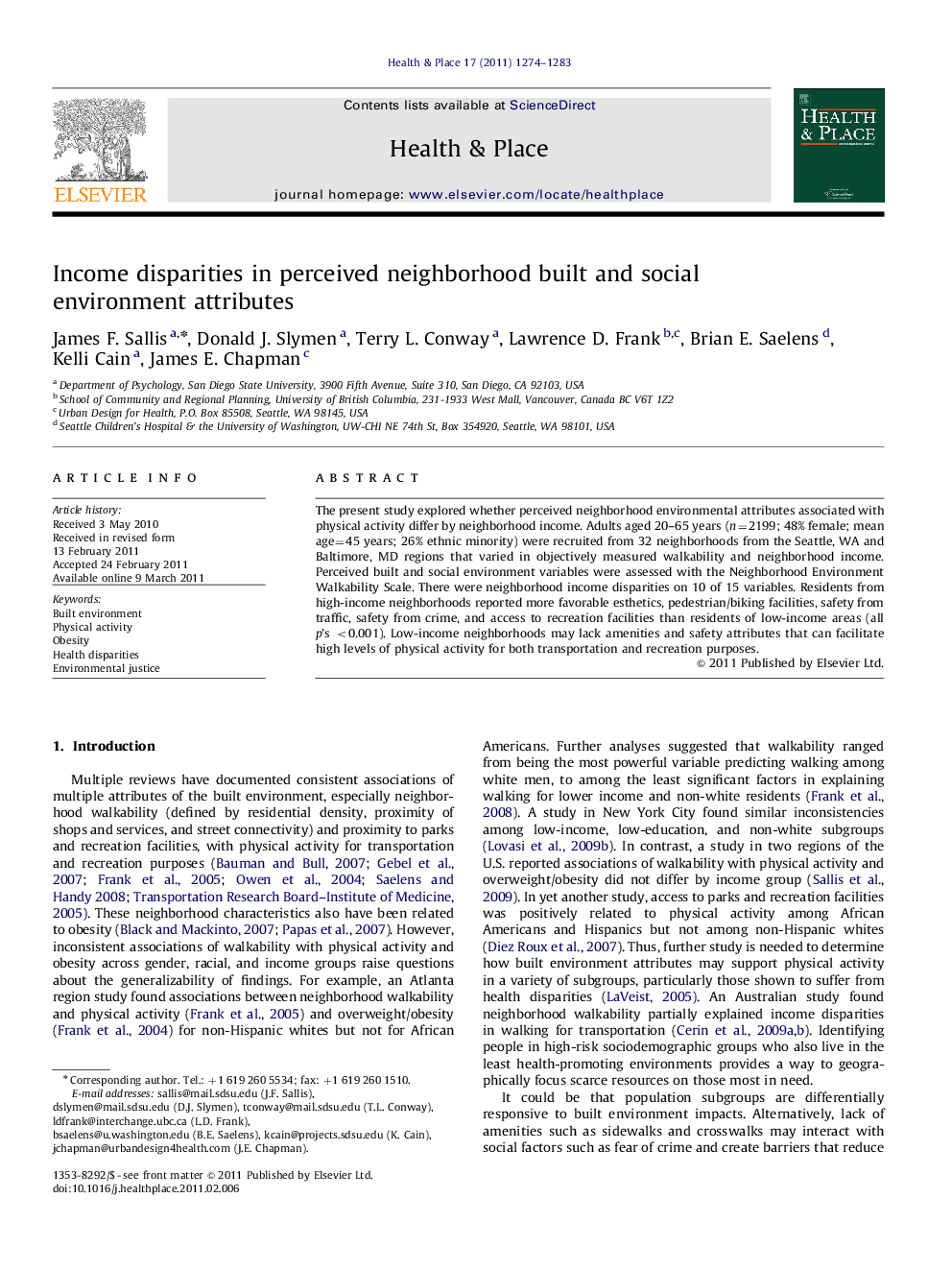| Article ID | Journal | Published Year | Pages | File Type |
|---|---|---|---|---|
| 1048633 | Health & Place | 2011 | 10 Pages |
The present study explored whether perceived neighborhood environmental attributes associated with physical activity differ by neighborhood income. Adults aged 20–65 years (n=2199; 48% female; mean age=45 years; 26% ethnic minority) were recruited from 32 neighborhoods from the Seattle, WA and Baltimore, MD regions that varied in objectively measured walkability and neighborhood income. Perceived built and social environment variables were assessed with the Neighborhood Environment Walkability Scale. There were neighborhood income disparities on 10 of 15 variables. Residents from high-income neighborhoods reported more favorable esthetics, pedestrian/biking facilities, safety from traffic, safety from crime, and access to recreation facilities than residents of low-income areas (all p's <0.001). Low-income neighborhoods may lack amenities and safety attributes that can facilitate high levels of physical activity for both transportation and recreation purposes.
